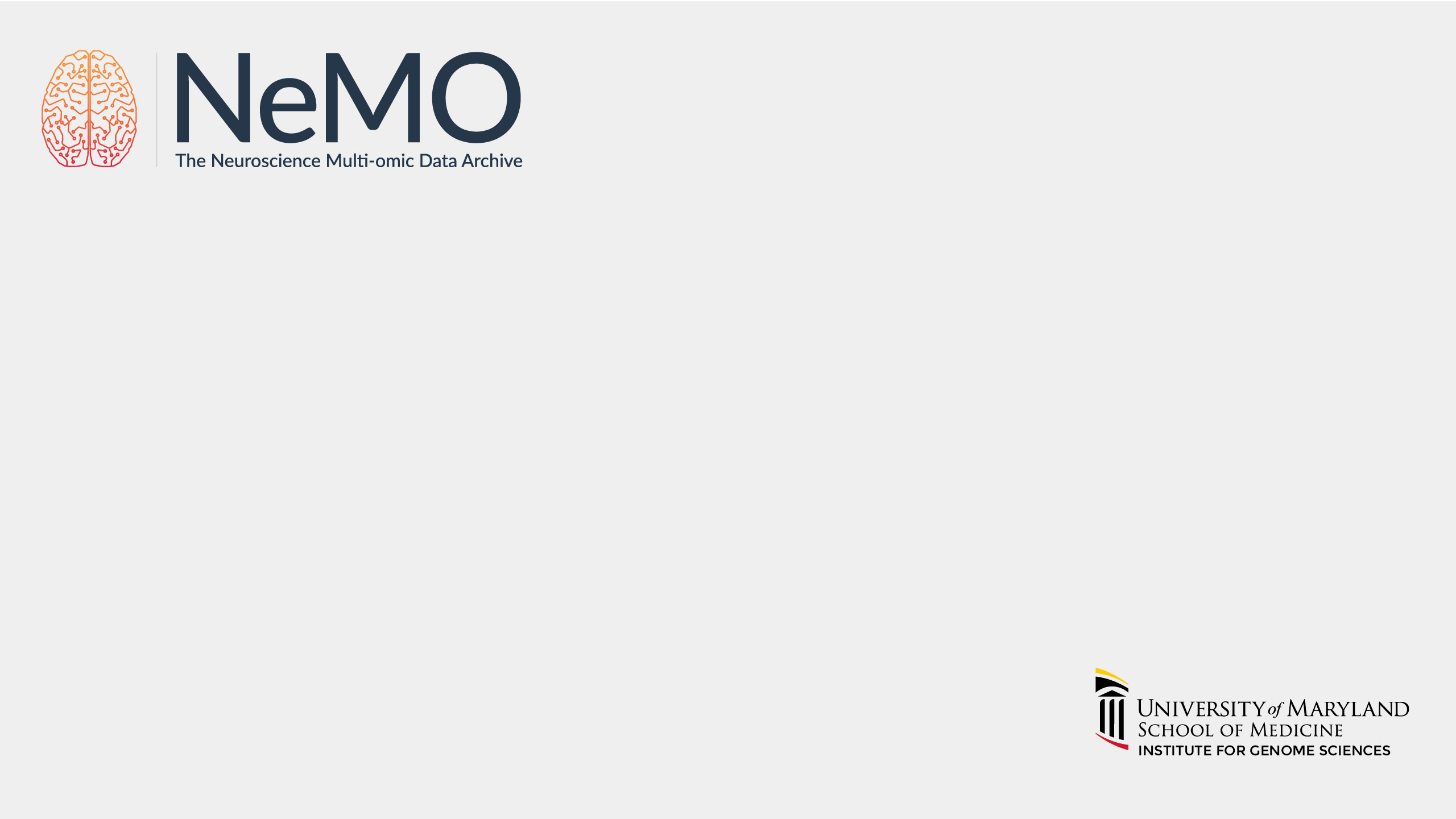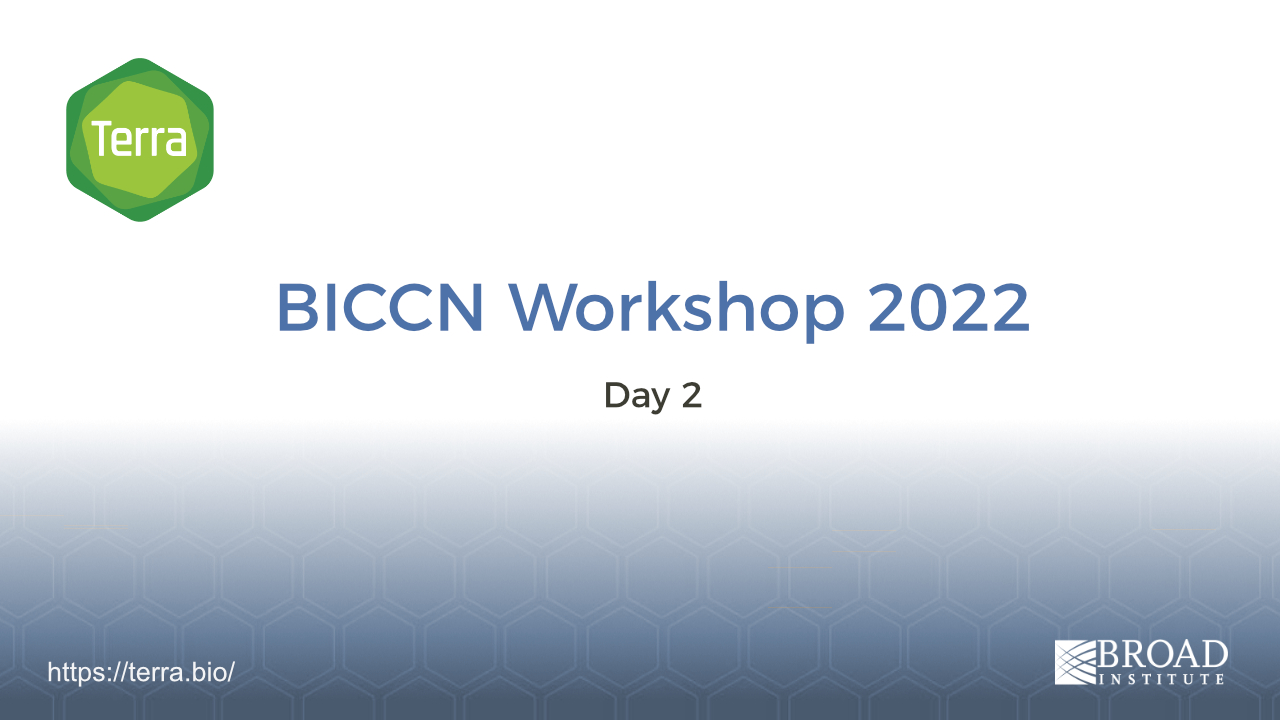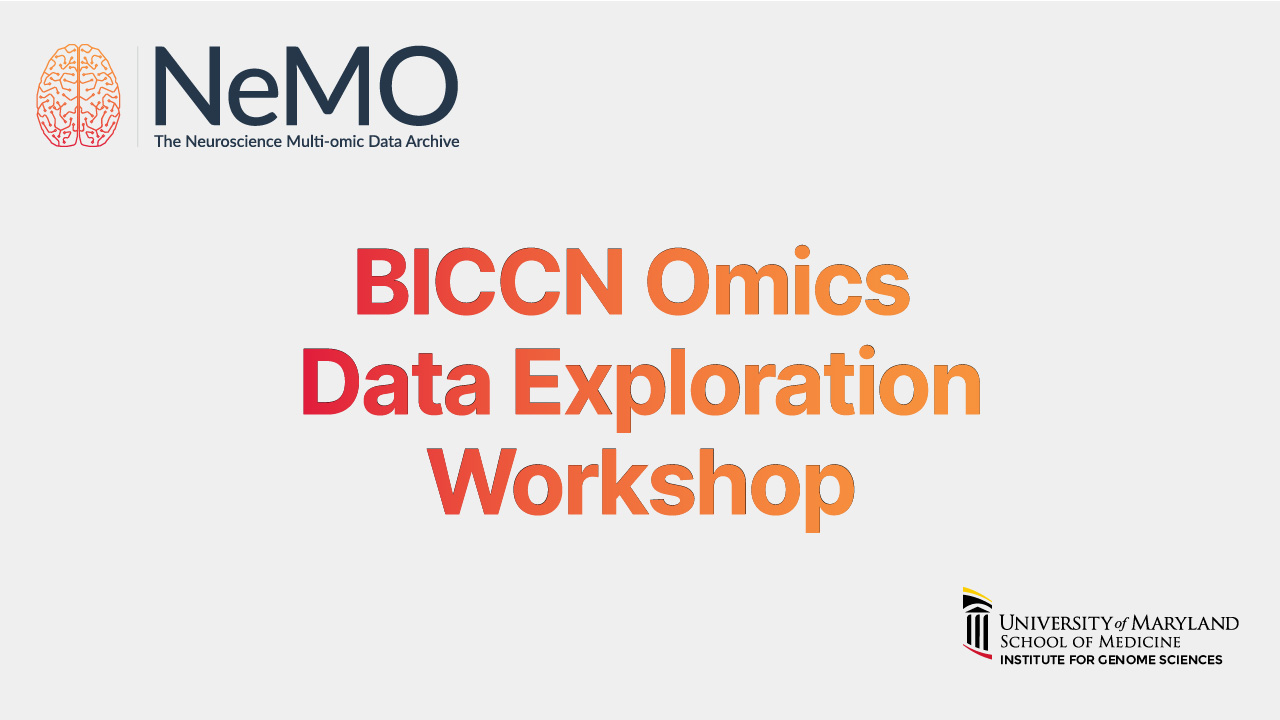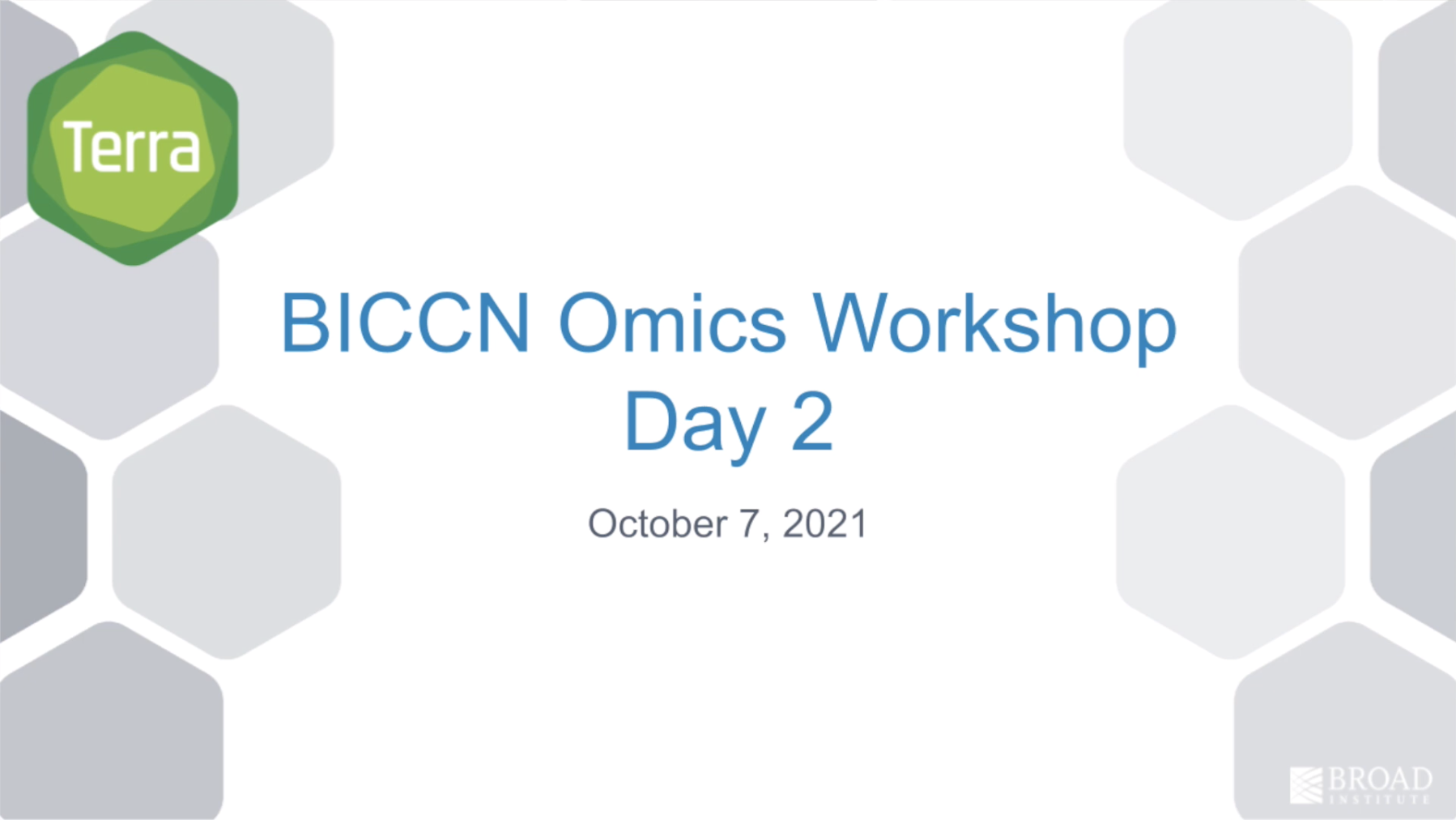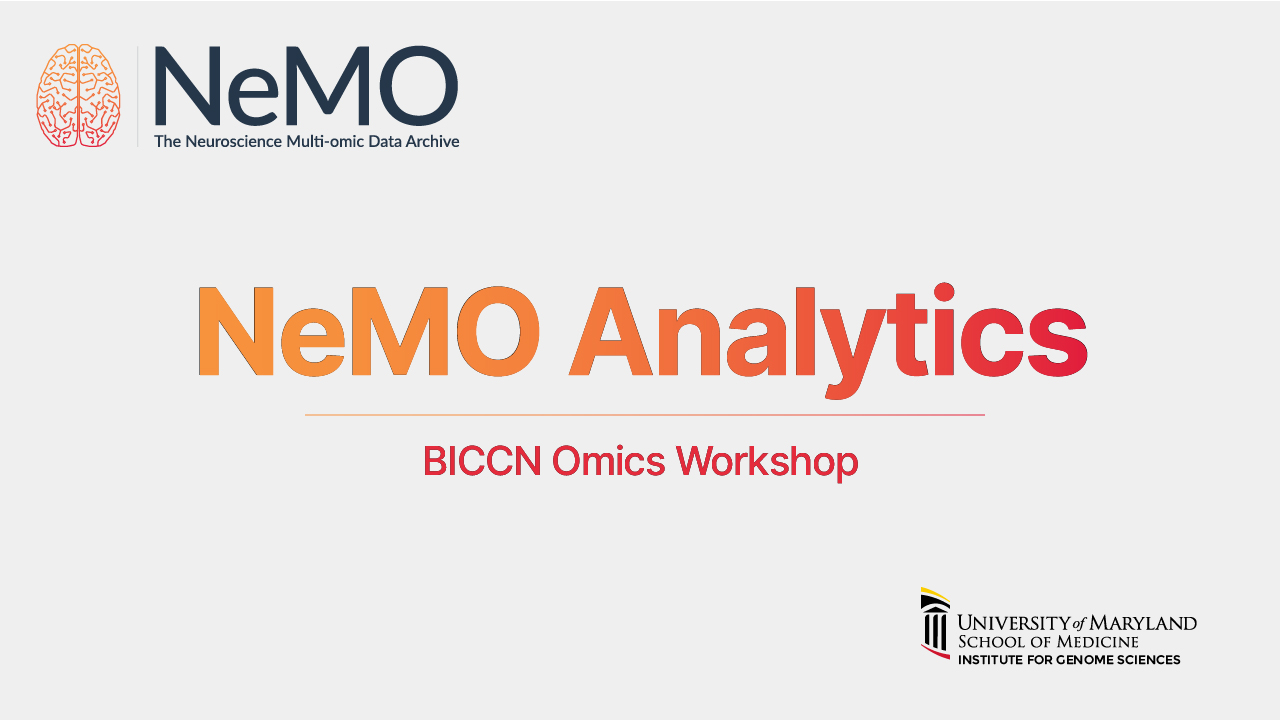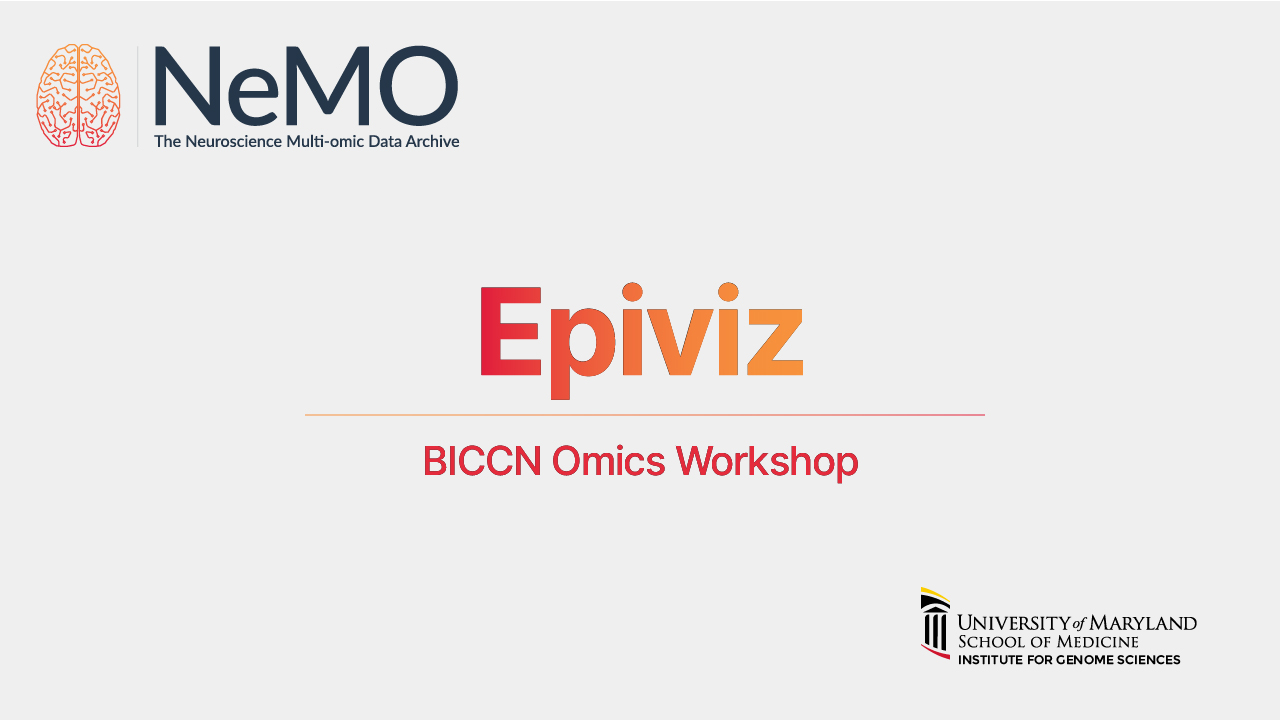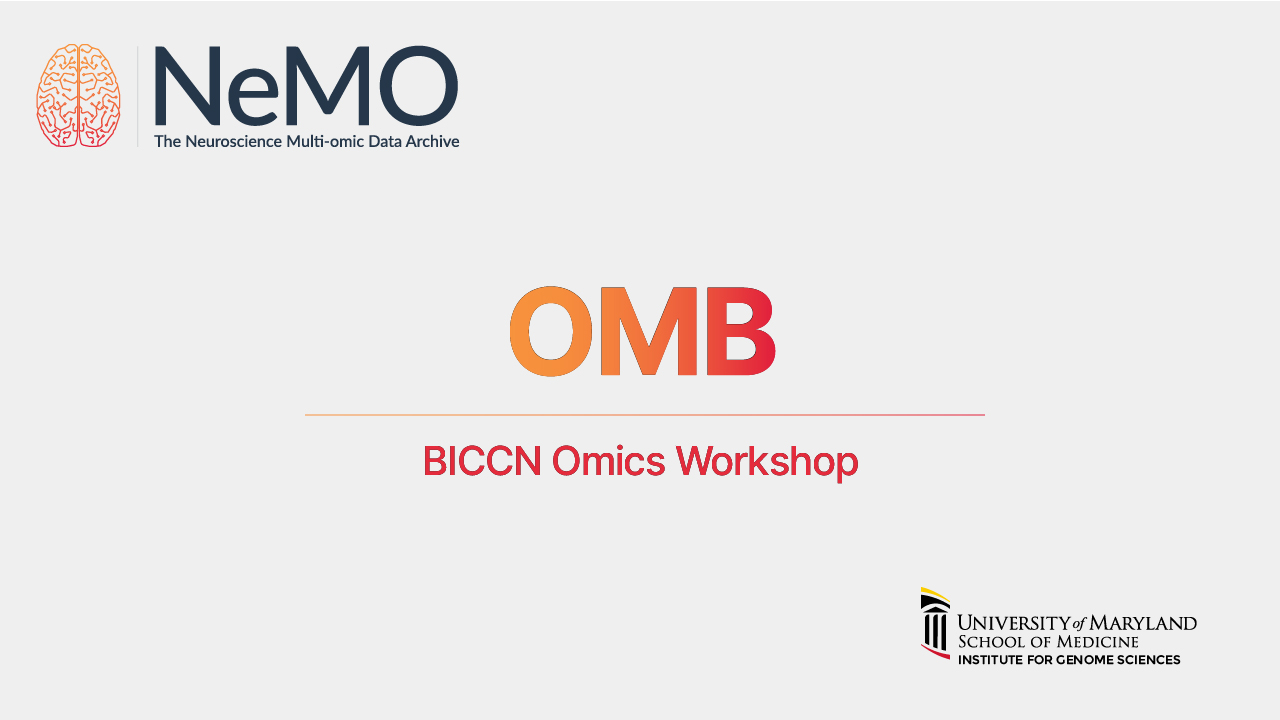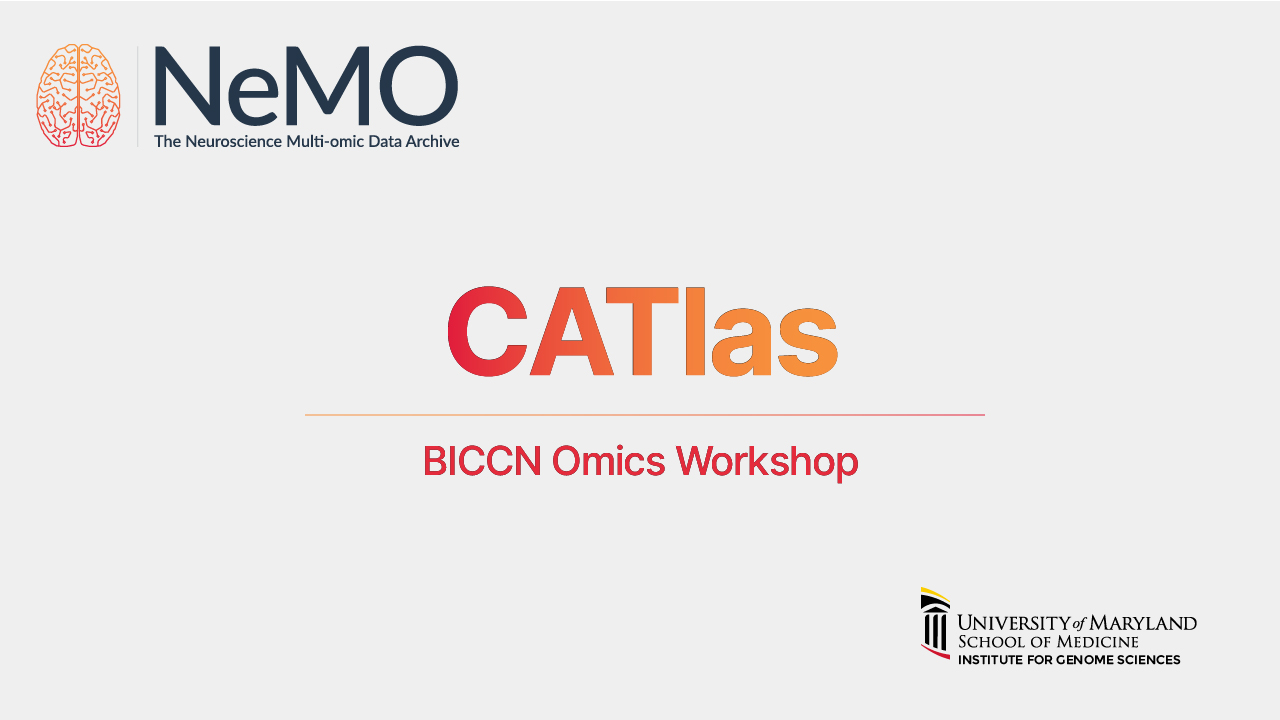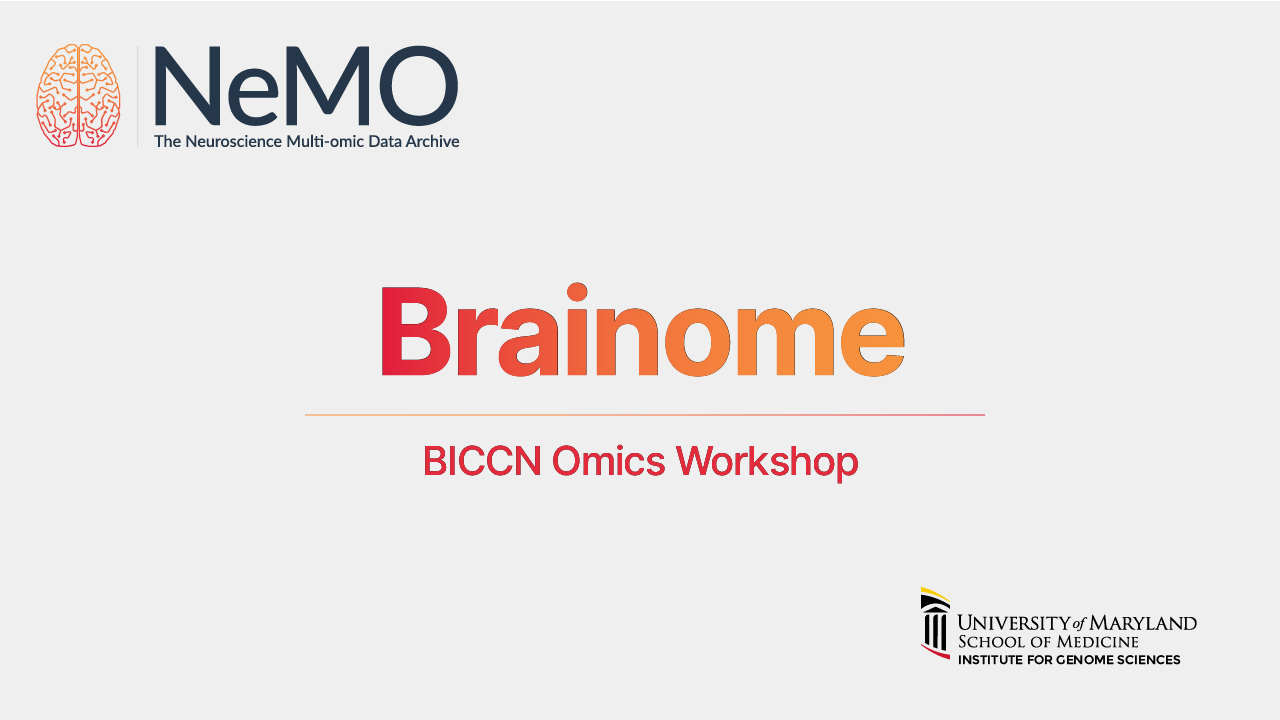BICCN Omics Workshop 2022
Summary
The BRAIN Initiative Cell Census Network (BICCN) is hosting a workshop (spread out over two half days) to highlight the datasets, tools, and resources generated by the BICCN. This FREE virtual event will include training in the use of cloud and web resources to engage in single-cell transcriptome data analysis and visualization.
June 15th & 16th, 2022 - BICCN Omics Workshop
Day one of the workshop will focus on the query and exploration of analyzed data associated with genes and cells and will include instruction on the use of a variety of tools for interrogating and visualizing BICCN data. Attendees will approach data in a global as well as local context through exercises employing various tools. No programming experience is required for day one. In day two of the workshop, participants will learn how to find BICCN data of interest, export it to the bioinformatics platform Terra, analyze it with BICCN-related pipelines and community tools like CellBender and visualize it with Single Cell Portal, a resource for disseminating single-cell data. See the Agenda tab for more information including a full list of tools.
Agenda
Day one of the workshop will focus on the query and exploration of analyzed data associated with genes and cells and will include instruction on the use of a variety of tools for interrogating and visualizing BICCN data. Attendees will approach data in a global as well as local context through exercises employing various tools. No programming experience is required for day one.
Data exploration June 15th
12:00 PM-4:00 PM Eastern
- Overview of the ecosystem and data (12:00-12:45)
- 12:00 - 12:25 - Overview of the ecosystem and tools to the mine the data
- 12:25 - 12:45 - Overview of the main findings of the recent BICCN publication package
- Tools and resources for visualization and query of analysis results. An overview of four different tools and resources with associated hands-on exercises. (Please see the Tools Covered tab for more information on each tool.)
- 12:45 - 1:45 NeMO Analytics and EpiViz
- 1:45 - 2:00 - Break
- 2:00 - 3:50 Bio tools rotations
- Brainome
- CATlas
- Allen Tools
- MetaNeighbor
- 3:50 - 4:00 - Workshop wrap-up
Data processing June 16th
12:00 PM -3:30 PM Eastern
In day two, participants will learn how to find BICCN data of interest, export it to the bioinformatics platform Terra, analyze it with BICCN-related pipelines and community tools like CellBender and visualize it with Single Cell Portal, a resource for disseminating single-cell data.
- 12:00 - 1:00 - Intro to Terra/NeMO Portal, Search For Data, and Data Download
- 1:00 - 1:30 - Run your Workflows
- 1:30 - 1:35 - Break
- 1:35 - 1:55 - Explore Data using Jupyter Notebooks
- 1:55 - 2:00 - Break
- 2:00 - 3:15 - Broad Single Cell Portal
- 3:15 - 3:30 - Wrap-up and Conclusion
Tools Covered
gEAR: Gene Expression Analysis Resource
The Neuroscience Multi-Omic (NeMO) Analytics portal enables web-based visualization and analysis of multi-omic data describing cell types in the developing and adult brain, powered by gEAR and EpiViz. The portal includes single-cell and bulk tissue RNA-seq, ATAC-seq, and ChIP-seq from the fetal human prefrontal cortex, as well as stem cell models of neural induction. The portal will expand to include multiple regions of the developing and adult brain and additional analytical tools.
Broad Single Cell Portal:
Built on top of Terra, the Broad Single Cell Portal is a cloud-based, scalable web application that aims to accelerate reproducible single-cell research through:
- enabling scientists to transform complex data into actionable insights through interactive visualizations;
- extending single cell genomics analysis to any scientist by providing curated pipelines and analysis;
- centralizing downloadable data, visualizations, and analysis to enable reproducible analysis;
- providing easy and secure sharing mechanisms to support all stages of scientific inquiry.
https://singlecell.broadinstitute.org/single_cell
Epiviz:
Epiviz is an interactive visualization tool for functional genomics data. It supports genome navigation like other genome browsers, but in addition allows multiple visualizations of data within genomic regions using scatterplots, heatmaps, and other user-supplied options. It also includes data from the Gene Expression Barcode project for transcriptome visualization.
https://www.cbcb.umd.edu/software/epiviz
NeMO Archive:
The Neuroscience Multi-omic Archive (NeMO Archive) is a data repository specifically focused on the storage and dissemination of omic data generated from the BRAIN Initiative and related brain research projects.
Terra:
Terra is a scalable platform for biomedical research that allows you to access data, run analysis tools and collaborate. Analysis capabilities include an automated workflow system for pipelining large scale analyses, as well as flexible computing environments for interactive analysis using popular applications such as Jupyter notebooks, RStudio (alpha), and Galaxy (alpha).
Brainome:
A genome browser built by the Mukamel lab (https://brainome.ucsd.edu/annoj/BICCN_MOp/) to visualize the cell type-specific transcriptomes and epigenomes of 56 neuronal cell types from the mouse primary motor cortex. Each cell type has 3 tracks, representing its DNA methylation, open chromatin, and gene expression profiles. Users can choose which tracks to show, and how they want to order and color them. The user customizations are recorded in the URL, which can be shared with others or saved for further self explorations. The browser also contains links to other related resources, including a cell browser with UMAP embeddings and clusterings, a mouse brain anatomy browser (Hongwei Dong's lab), and NeMO analytics.
https://brainome.ucsd.edu/portal/tabular/ensemble
Catlas:
The mammalian cerebrum performs high-level sensory, motion control, and cognitive functions through highly specialized cortical structures and subcortical nuclei. Recent surveys of mouse and human brains with single-cell transcriptomics and high-throughput imaging technologies have uncovered hundreds of neuronal cell types and a variety of non-neuronal cell types distributed in different brain regions, but the cell-type specific transcriptional regulatory programs responsible for the unique identity and function of each brain cell type have yet to be elucidated. Here, we probe the accessible chromatin in >800,000 individual cells from 45 regions spanning the adult mouse isocortex, olfactory bulb, hippocampus and cerebral nuclei, and use the resulting data to define 491,818 candidate cis-regulatory DNA elements in 160 distinct cell groups. We link a significant fraction of them to putative target genes expressed in diverse cerebral cell types and uncover transcriptional regulators involved in a broad spectrum of molecular and cellular pathways in different neuronal and glial cell populations. Our results provide a foundation for comprehensive analysis of gene regulatory programs of the mammalian brain and facilitate the interpretation of non-coding risk variants associated with various neurological diseases and traits in humans.
MetaNeighbor:
MetaNeighbor is a tool developed to measure the similarity of cells across single cell RNA-sequencing (scRNA-seq) datasets by sampling from both random and functionally defined gene sets. It provides an easily interpretable cross-dataset framework for quantifying cell type replicability, allowing users to answer questions such as “Can I predict which cells belong to a similar cell type in an independent test dataset?”. MetaNeighbor uses a flexible cross-dataset neighbor voting framework to compute cell-type similarities between datasets including supervised and unsupervised applications.
Participating Organizations
- University of Maryland School Of Medicine, Baltimore MD
- Institute for Genome Sciences, University of Maryland School of Medicine
- The Broad Institute, Boston MA
- The Allen Institute for Brain Sciences, Seattle WA
- UMD/Genentech
- University of California San Diego, San Diego, CA
- Salk Institute
BICCN Omics Workshop Recordings
June 2022 Workshops
DAY 1:
DAY 2:
October 2021 Workshops
January 2021 Workshops
